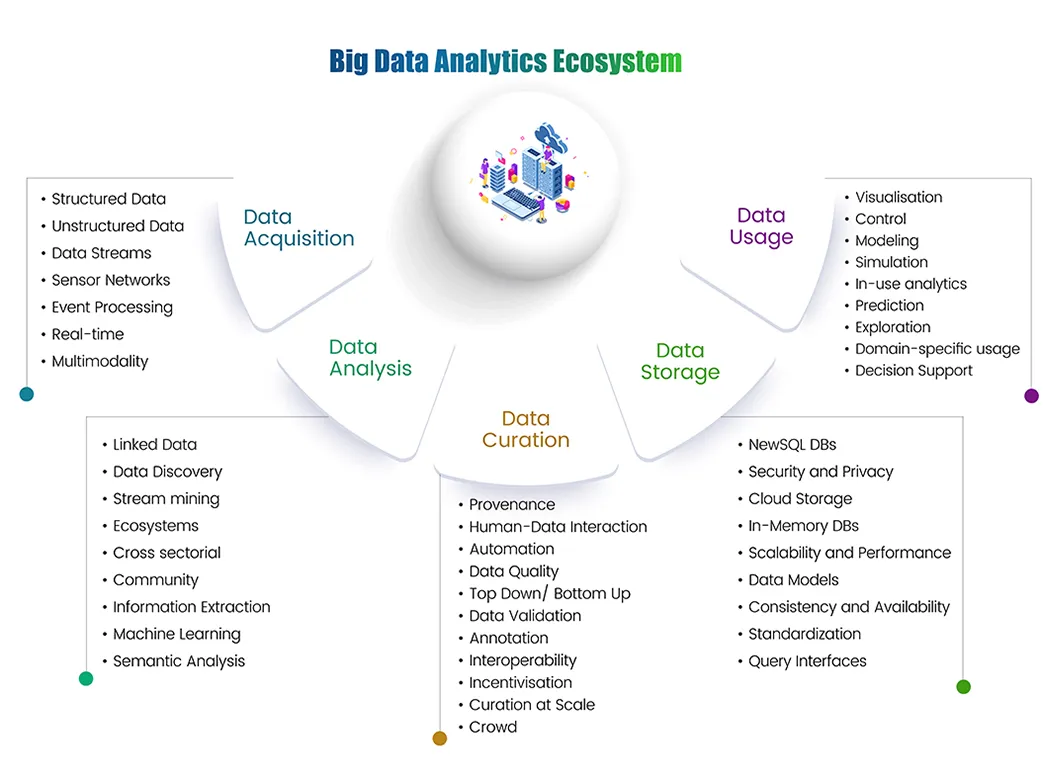Hydra Tech Insights
Stay updated with the latest in technology and gaming.
Big Data: The Crystal Ball of Business Insights
Unlock the secrets of Big Data and discover how it can transform your business insights into crystal-clear strategies for success!
How Big Data is Transforming Business Decision-Making
Big Data is revolutionizing the way businesses make decisions by providing unprecedented insights into customer behavior, market trends, and operational efficiencies. With the advent of advanced analytics and data processing technologies, organizations can now collect vast amounts of data from various sources, including social media, customer transactions, and sensor data. This ability to harness and analyze big data enables companies to identify patterns and correlations that were previously undetectable, leading to more informed and strategic decision-making.
Moreover, the impact of big data on decision-making extends beyond mere analysis. Companies are using predictive analytics to forecast future trends and prepare for shifts in consumer preferences. For instance, businesses can leverage big data to optimize their supply chain management, improving efficiency and reducing costs. By making data-driven decisions, organizations can enhance their competitive edge, drive innovation, and ultimately deliver greater value to their customers.

Understanding the Role of Big Data in Predictive Analytics
Big data plays a crucial role in the field of predictive analytics, transforming how businesses make decisions and foresee future trends. With the ability to collect and analyze vast amounts of information from various sources, organizations can identify patterns and correlations that were previously unnoticed. This analytical process enables businesses to make data-driven predictions about customer behavior, market trends, and potential risks, ultimately leading to more informed strategic planning.
By leveraging big data, predictive analytics empowers companies to enhance their operations through improved accuracy and efficiency. For instance, retailers can utilize predictive models to forecast inventory needs and optimize stock levels, while financial institutions can assess credit risks by analyzing historical transaction data. As the volume of data continues to grow, the integration of big data into predictive analytics will become increasingly vital, allowing organizations to harness insights that drive innovation and competitive advantage.
Big Data vs. Traditional Analytics: What's the Difference?
Big Data and Traditional Analytics are both crucial components in the world of data analysis, yet they serve different purposes and leverage different types of data. Big Data refers to the vast volumes of structured and unstructured data that are generated at high velocity from various sources, including social media, IoT devices, and online transactions. This type of data often requires specialized tools and techniques, such as machine learning and distributed computing, to process and analyze it effectively. In contrast, Traditional Analytics typically deals with smaller, more structured datasets that can be analyzed using conventional statistical methods and tools, allowing businesses to derive insights from historical data.
One of the key differences between the two lies in their approach to data handling. Big Data employs advanced algorithms and technologies to uncover hidden patterns and trends across large datasets, enabling organizations to make data-driven decisions in real-time. On the other hand, Traditional Analytics often relies on descriptive analytics and predefined reports to understand past performance. This could involve basic techniques, such as data visualization and trend analysis, which may not provide the depth of insight that is achievable with Big Data. As a result, many organizations are increasingly adopting Big Data solutions to stay competitive in today’s rapidly evolving marketplace.